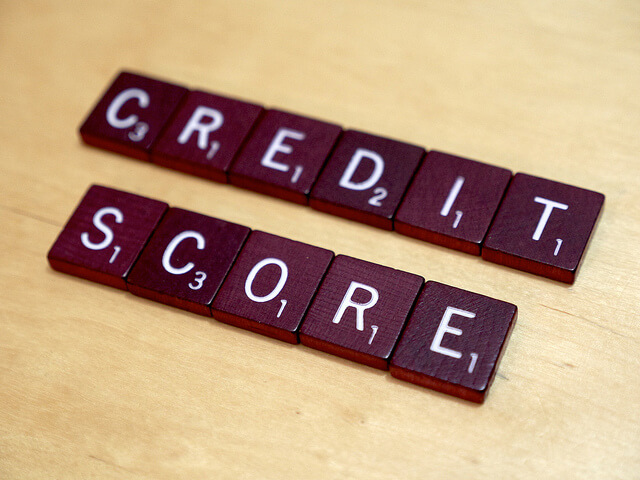Biggest Moves to Make to Improve Your Credit Score

There are few quick shortcuts to improving a credit score, but there are some big moves that can raise it dramatically.
Here are some of the biggest moves you can make to improve your credit score:
Know your credit score
Start by checking your credit score at AnnualCreditReport.com for free. The three credit reporting companies must give you a free report once a year, so you can either get all three at once or spread them out by getting one every four months.
The score you receive represents your credit risk at a point and is meant to measure your future credit risk. Scores from the Fair Isaac Corporation, or FICO, are most widely used, with scores ranging from a low of 300 to a high of 850.
The higher the score you have, the more likely you are to be approved for credit and get the best loan rates for auto loans, home loan and credit cards, among other things.
Here’s a breakdown of what the scores generally mean:
- 781 and above: Excellent credit leading to lowest interest rates.
- 661-780: Very good with access to most lines of credit.
- 501-600: Fair with slightly higher interest rates.
- 500 or lower: Poor credit and difficulty getting credit.
Once you have your credit report in hand and know your credit score, you’ll know what you’re up against and can start working to improve it. Now comes the hard work.
Dispute errors
Your credit report is full of all kinds of useful information. It shows accounts you have open and closed, collections, tax liens, employer information, your name and address, among other things. It can also list a credit card account that doesn’t belong to you, meaning someone may have fraudulently taken out a credit card in your name.
You want to check the report for inaccuracies and then dispute them with the credit reporting companies so that the wrong information is removed from your credit file and your credit score is improved.
For example, a report may list a closed credit card with an unpaid balance, when you know you paid it off. A copy of your last credit card statement showing the card paid off and closed should solve this, and should be included with your dispute letter.
The Federal Trade Commission has a sample dispute letter for reporting errors on your credit report. The credit reporting companies have 30 days to investigate your query.
Pay bills on time to improve your credit score
Being on time, as your kindergarten teacher probably told you, is an important lesson that will serve you well in life. It’s important for a credit score.
Payment history accounts for 35 percent of FICO credit scores, and is the first thing any lender wants to know about you. If you’ve paid your credit accounts on time in the past, chances are you’ll continue to, the thinking goes.
A few late payments won’t kill your credit score, and having no late payments won’t lead to a perfect credit score.
But they’re the single biggest factor in a credit score, so not being late or missing a payment is important. A long history of making payments on time is also important.
FICO scores consider how late the payments were, how much was owed, how recently they occurred, and how many late payments there are.
Use your credit card less
This sounds like an obvious thing to do, and a difficult one, but paying off your credit cards each month and using less of the credit amount available to you is important. The amounts owed on accounts determines 30 percent of a credit score.
You’re not expected to have a zero balance on your credit cards, but should just use 10 percent of the credit amount you’re given to get the best credit score.
Using a high percentage of your available credit can indicate you’re overextended and are more likely to make late or missed payments.
This percentage is called a credit utilization ratio. It’s the percentage of your available credit you’re using on revolving accounts — meaning credit cards.
Here’s a simple example: If you have a credit card with a credit limit of $1,000 and you’ve charged $400 on it, you’re using 40 percent of your available credit and have a credit utilization ratio of 40 percent. To get down to 10 percent utilization, you’d need a balance of $100.
Even if you pay your credit card bills in full each month, you still may have a balance and a credit utilization ratio above 10 percent as you continue using a card.
The number of accounts you have is also a factor. Having a large number of accounts with amounts owed can indicate a higher risk of over-extension. If you do have a few credit cards, keep all of the balances low to help improve your credit score.
Open a credit card, or two
This sounds counterintuitive, but opening a new credit card account or two can help improve your credit utilization ratio. The ratio will drop by increasing your overall credit limit.
But doing this comes with a few caveats.
Your credit utilization ratio will only drop if you don’t use the credit cards or keep the balances below 10 percent of the limits.
If you already have a low credit score, getting approved for a new credit card may be difficult. And adding a new credit card to your wallet may not be a good idea if you have problems keeping a lid on spending or don’t pay your bills on time.
As detailed above, amounts owed equals about 30 percent of a credit score, so opening a new credit card can lower your utilization amount and make it look like you’re using less of your available credit. Just be sure to use it wisely.
New credit accounts for 10 percent of a credit score, so adding one new credit card to you credit profile won’t improve it much. But opening one or two new credit cards each year shouldn’t hurt it if used well.
Keep at it
Whatever steps you’re taking to improve your credit score, know that it’s a journey that can take years.
While the above steps can lead to relatively quick improvements in a credit score, they’re also things that should become habits if you want to keep your credit score high for years to come.
Checking for credit report errors, paying your bills on time and keeping balances low are some of the best ways to improve your credit score. They should help you gain access to better credit terms, eventually leading to lower interest rates and saving you money.



